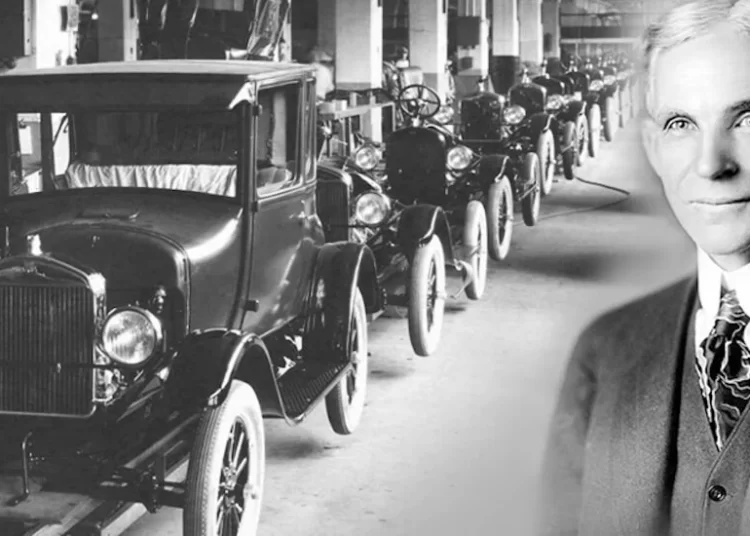Disclaimer: The content of this article, including opinions and data, has been sourced from the public domain. The Executive View does not claim any rights or reservations over the information presented herein. This article is intended for informative purposes only and does not constitute endorsement or verification by The Executive View.
Henry Ford was born on July 30, 1863, on a farm in Greenfield Township, Michigan, to William and Mary Ford. His family had modest means, and Henry grew up with a strong work ethic and a curiosity about machines and how they worked. He attended a one-room schoolhouse, but his formal education was limited.
At the age of 16, Henry left his family’s farm to seek employment in nearby Detroit. He took on various jobs as an apprentice machinist and engineer, where he honed his skills and gained valuable experience. During his free time, he was an avid tinkerer, often experimenting with machinery and engines.
In 1891, Henry Ford joined the Edison Illuminating Company in Detroit, where he worked as an engineer. This job allowed him to be closer to his passion for machinery and innovation. His dedication and hard work soon caught the attention of Edison himself, and Ford became chief engineer within a few years.
Inspired by Thomas Edison’s emphasis on inventing and creating, Ford began experimenting with the idea of building a horseless carriage – an automobile. In 1896, he completed his first self-propelled vehicle, the “Quadricycle.” Although rudimentary, it ignited Ford’s passion for automobiles and set him on a path that would lead to tremendous success.
In 1903, at the age of 40, Henry Ford co-founded the Ford Motor Company with a group of investors. The company’s first successful product was the Model T, which was introduced in 1908. The Model T revolutionized the automobile industry, making cars affordable and accessible to the average American. Ford’s innovative use of assembly line production significantly reduced manufacturing costs and increased production efficiency.
As the demand for the Model T surged, Ford’s wealth grew exponentially. He introduced the concept of paying his workers higher wages to retain a loyal workforce and enable them to afford the very products they were manufacturing. This, in turn, helped create a new middle class and stimulated the economy.
In 1914, Ford further revolutionized the manufacturing process by implementing the moving assembly line, reducing production time for a single car from over 12 hours to around 90 minutes. This breakthrough allowed Ford Motor Company to produce cars at an unprecedented rate and solidified its position as an industrial powerhouse.
By 1918, half of all cars in the United States were Model Ts, and Henry Ford became one of the richest and most famous men in the world. He continued to innovate and experiment, creating new models and expanding the company’s reach internationally.
In addition to his achievements in business, Henry Ford was a philanthropist and contributed significantly to various charitable causes, education, and research.
Henry Ford’s journey from a humble farm boy to a global industrial icon serves as a testament to his perseverance, innovation, and determination to create something that changed the world. His rags-to-riches story remains an inspiration to entrepreneurs and dreamers worldwide, highlighting the power of vision, hard work, and passion in achieving remarkable success.









